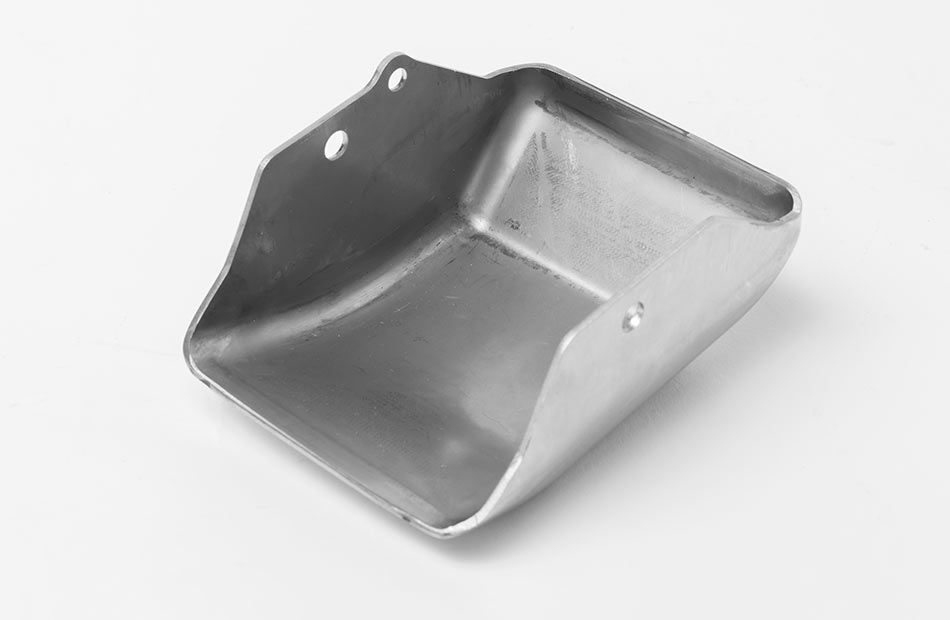Metal Stamping Innovations: Elevating Manufacturing Processes for Superior Results
In the realm of producing processes, steel marking has long been a foundation method for generating a range of accuracy elements. However, with the ruthless march of technical development, the landscape of steel marking is undertaking a significant makeover. Developments in this field are not just enhancing the efficiency and high quality of manufacturing but are likewise paving the method for new possibilities that were previously past reach. As the sector accepts these cutting-edge advancements, a redefinition of what is attainable in production is underway, appealing superior results and establishing new criteria for quality in the area.
Development of Steel Stamping Strategies

In addition, developments in product scientific research have brought about the growth of high-strength alloys that can currently be perfectly marked into complex shapes, satisfying a broader series of commercial applications. The assimilation of robotics and expert system has actually additionally optimized the marking procedure by boosting speed and precision while minimizing the risk of human mistake.

Influence of Advanced Materials
Have innovative materials transformed steel marking processes considerably in the production market? By making use of materials such as high-strength alloys, progressed compounds, and ingenious layers, steel stamping procedures can now produce elements that are lighter, more powerful, and much more resilient than ever in the past.
These advanced materials offer exceptional mechanical buildings, corrosion resistance, and thermal security, permitting producers to satisfy the needs of contemporary markets such as aerospace, automotive, and electronics. Additionally, making use of innovative products in steel stamping has promoted the production of intricate geometries and elaborate layouts that were previously unattainable with standard techniques.
Moreover, the implementation of advanced products has actually caused lowered product waste, reduced manufacturing expenses, and shorter preparations, making metal stamping procedures much more sustainable and cost-effective. As modern technology continues to advancement, the effect of sophisticated materials on metal marking procedures is expected to drive more technology and boost the competitiveness of producers in the global market.
Automation in Metal Stamping
The evolution of metal stamping procedures driven by the assimilation of innovative materials has established the stage for substantial developments in automation within the manufacturing industry. Automation in metal marking has actually transformed production procedures, enhancing performance, accuracy, and overall result top quality. Through the application of robotics, sensors, and computer-controlled systems, tasks that were lengthy and as soon as manual can now be executed with exceptional speed and precision.
Automation in steel marking not only increases production rates but also ensures consistency in the production procedure. By minimizing human treatment, the threat of errors is significantly reduced, causing greater degrees of item uniformity and dependability. In addition, automation enables producers to embark on complicated stamping tasks that would certainly be difficult or not practical to accomplish by hand.
In addition, automation in steel marking adds to a safer working atmosphere by minimizing the demand for workers to participate in harmful or repeated tasks - Metal Stamping. This shift in the direction of automation not only improves performance but also leads the way Home Page for the future of manufacturing, where modern technology plays a central function in driving functional excellence
Quality Control and Inspection Systems
With an emphasis on accuracy and integrity, quality assurance and assessment systems play a critical role in making sure item quality in metal stamping procedures. These systems are created to keep track of every stage of production, from material examination to the end product, to assure that all components meet the required standards. By implementing sophisticated technologies such as optical examination systems, coordinate determining devices (CMM), and automated assessing equipment, makers can spot also the tiniest discrepancies in dimensions, surface area high quality, and general stability of stamped parts.

Sustainability Practices in Steel Stamping
Building upon the foundation of precision and integrity established through quality control and evaluation systems, the assimilation of lasting practices in metal marking processes is significantly ending up being a centerpiece for producers looking for to minimize ecological impact and optimize resource use. Sustainability methods in metal stamping encompass a range of efforts intended at decreasing waste generation, energy intake, and greenhouse gas discharges throughout the production procedure.
One secret aspect of sustainability in metal marking is the adoption of green products and innovations that promote recyclability and waste decrease. By utilizing recycled materials and implementing energy-efficient equipment, makers can decrease their carbon footprint and add to a much more sustainable manufacturing cycle. In addition, optimizing manufacturing processes to reduce material waste and power use not only benefits the environment however additionally brings about cost financial savings for organizations in the future.
Moreover, the execution of sustainable techniques in steel marking can enhance brand credibility and interest environmentally conscious customers. As sustainability remains to acquire significance in the manufacturing industry, integrating green campaigns right into metal marking processes is vital for long-lasting success and competitiveness in the marketplace.
Final Thought
To conclude, metal stamping techniques have actually substantially developed with time, integrating innovative materials and automation to enhance manufacturing procedures. Quality control and examination systems play an important role in making certain exceptional results, while sustainability methods are increasingly being applied to decrease ecological impact. These innovations in steel stamping have reinvented the industry, causing more lasting and efficient production methods for various markets.
Metal stamping, news when a handbook and labor-intensive process, has changed into a very automated and advanced method of forming steel sheets into numerous types and styles.Have advanced materials transformed steel stamping processes dramatically in the manufacturing market? By utilizing products such as high-strength alloys, advanced compounds, and innovative layers, metal stamping processes can currently produce elements that are lighter, more powerful, and much more resilient than ever previously.
The advancement of metal marking processes driven by the combination of innovative products has actually established the stage for substantial developments in automation within the manufacturing market.In final thought, steel marking methods have actually considerably developed over time, integrating advanced materials and automation to improve producing processes.